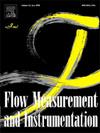A blending model for predicting flow rate of crude oil pipeline by integrating Leapienzon friction formula with random forest algorithm
IF 2.7
3区 工程技术
Q2 ENGINEERING, MECHANICAL
引用次数: 0
Abstract
Flow parameters are crucial in pipeline operations. To address the challenge of accurately measuring the flow rate in crude oil pipelines, this paper proposes a hybrid model, i.e., the L-RF Blending model, which integrates the Leapienzon friction formula with the Random Forest (RF) model using a Blending approach. Compared to the Leapienzon friction formula and the existing predictive models that rely solely on RF, Support Vector Regression (SVR), Gaussian Process Regression (GPR), or Backpropagation (BP) algorithms, the L-RF Blending model better captures the complex relationships between the input and output variables. This is achieved by combining critical information from field sensor data with existing mechanistic knowledge. To assess the generalization of the Blending model, its performance is compared with other models using new datasets collected from an actual crude oil pipeline, demonstrating its potential for enhancing safety monitoring in pipeline management.
基于leapenzon摩擦公式和随机森林算法的原油管道流量预测混合模型
在管道作业中,流量参数是至关重要的。为了解决准确测量原油管道流量的难题,本文提出了一种混合模型,即L-RF混合模型,该模型使用混合方法将Leapienzon摩擦公式与随机森林(Random Forest, RF)模型相结合。与Leapienzon摩擦公式和仅依赖于RF、支持向量回归(SVR)、高斯过程回归(GPR)或反向传播(BP)算法的现有预测模型相比,L-RF混合模型更好地捕捉了输入和输出变量之间的复杂关系。这是通过将现场传感器数据中的关键信息与现有的机械知识相结合来实现的。为了评估混合模型的泛化性,使用从实际原油管道收集的新数据集将其性能与其他模型进行了比较,证明了其在管道管理中加强安全监测的潜力。
本文章由计算机程序翻译,如有差异,请以英文原文为准。
求助全文
约1分钟内获得全文
求助全文
来源期刊

Flow Measurement and Instrumentation
工程技术-工程:机械
CiteScore
4.30
自引率
13.60%
发文量
123
审稿时长
6 months
期刊介绍:
Flow Measurement and Instrumentation is dedicated to disseminating the latest research results on all aspects of flow measurement, in both closed conduits and open channels. The design of flow measurement systems involves a wide variety of multidisciplinary activities including modelling the flow sensor, the fluid flow and the sensor/fluid interactions through the use of computation techniques; the development of advanced transducer systems and their associated signal processing and the laboratory and field assessment of the overall system under ideal and disturbed conditions.
FMI is the essential forum for critical information exchange, and contributions are particularly encouraged in the following areas of interest:
Modelling: the application of mathematical and computational modelling to the interaction of fluid dynamics with flowmeters, including flowmeter behaviour, improved flowmeter design and installation problems. Application of CAD/CAE techniques to flowmeter modelling are eligible.
Design and development: the detailed design of the flowmeter head and/or signal processing aspects of novel flowmeters. Emphasis is given to papers identifying new sensor configurations, multisensor flow measurement systems, non-intrusive flow metering techniques and the application of microelectronic techniques in smart or intelligent systems.
Calibration techniques: including descriptions of new or existing calibration facilities and techniques, calibration data from different flowmeter types, and calibration intercomparison data from different laboratories.
Installation effect data: dealing with the effects of non-ideal flow conditions on flowmeters. Papers combining a theoretical understanding of flowmeter behaviour with experimental work are particularly welcome.
 求助内容:
求助内容: 应助结果提醒方式:
应助结果提醒方式:


